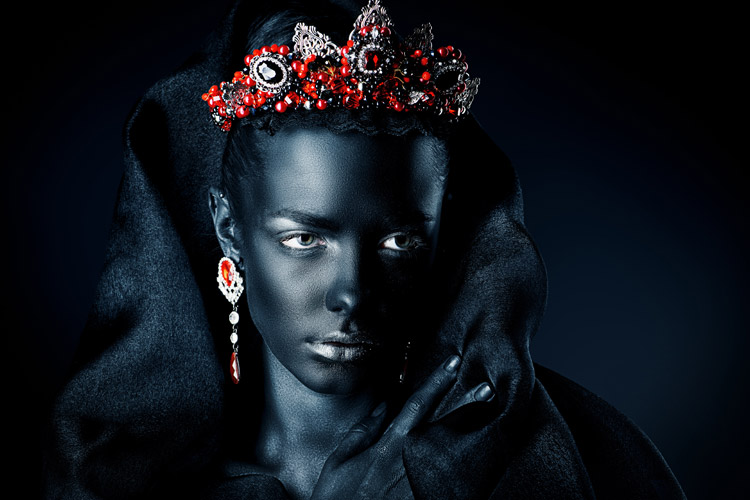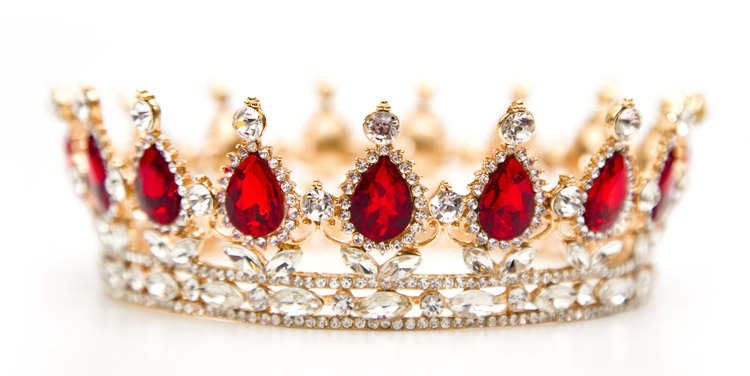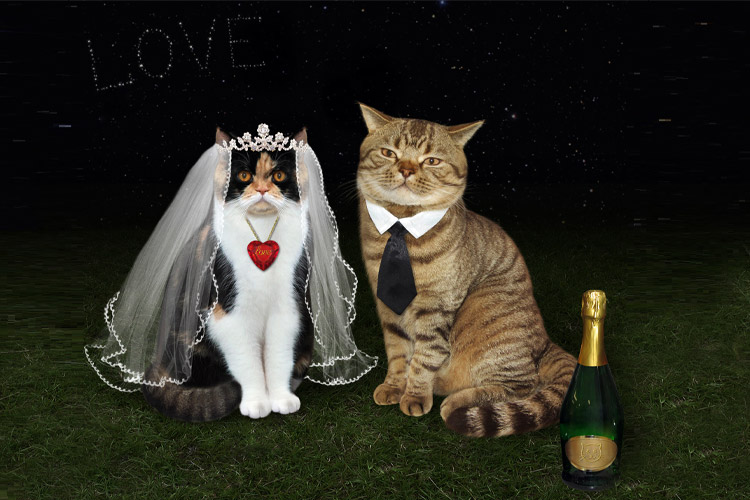By Claudia S. Copeland, PhD
When it comes to passion—whether adoration, fascination, or passionate ambition—nothing expresses ardor like the fiery ruby. The pink to crimson July birthstone has been admired through the ages as a symbol of romance and prosperity, its brilliance expressing both the passion of romantic love and the passion of successful pursuit of one’s dreams.

A True Precious Stone
Rubies, along with diamonds, sapphires, and emeralds, are one of a quartet of stones considered truly precious. Like sapphire, ruby is a type of corundum mineral (Al2O3), but with a small percentage of chromium ions— an impurity that imparts the normally clear mineral with dazzling shades of scarlet and rose. Like the other precious stones, rubies are extremely hard (second only to diamonds on the Mohs hardness scale), making them resistant to scratching by everyday substances and therefore good choices for jewelry on the hand. Whereas softer stones like opals are best in earrings or necklaces, or worn only on rare occasions, a vintage ruby ring or a ruby bracelet can be worn every day– no amount of rummaging around in your purse will scratch a ruby, unless your purse is filled with diamonds!

Medieval Rubies: Stones of Power
This type of strength was surely not necessary for the noble ladies of history often seen draped in rubies, but it probably had something to do with the gem’s association with power. A traditional “stone of kings“, the ruby was thought to protect the power and wealth of those who wore it. Blood-red rubies were set into talismans and into the hilts of weapons, and were popular among those prepared to risk their lives. Associated with the element of fire in the Middle Ages, the ruby symbolized strength, and was prized in ruby engagement rings as well as religious jewelry.
 Ruby Jewelry in the Renaissance
Ruby Jewelry in the Renaissance
Although 16th Century fashion still featured ruby rings in heavy settings, a more elegant showcasing of the gems was dawning, and the chunky medieval ruby jewelry gradually gave way to lighter, more elegant designs in the Renaissance. With the lowering of necklines, the ruby necklace became a mainstay in Renaissance portraiture, reflecting the popularity of the stone. Queen Elizabeth I has been depicted with rubies in her hair, sewn into her clothes, and suspended from her belt. She died wearing a ruby ring that opened to show portraits of herself and her mother, Anne Boleyn.

Rubies and Romance: Victorian Jewelry, Art Nouveau, and Beyond
Over time, the association of rubies with wealth and power evolved to favor romantic depictions, such as the strawberry-leaf ruby-and-diamond coronet given by Queen Victoria to her daughter Princess Beatrice. The art nouveau designs of the Edwardian period were yet more fanciful, with depictions of mythological figures, Egyptian motifs, and natural floral and animal designs, typified by the sinuous lines of this brooch of a woman with ruby-inlaid dragonfly wings. Rubies continued to appear in whimsical designs throughout the early 20th Century, such as in Wallis Simpson’s Cartier flamingo, with rubies as pink feathers. By the mid-20th Century, though, bling reigned supreme, exemplified by Elizabeth Taylor’s set of matching diamond and ruby earrings, necklace, and bracelet, also by Cartier.
Today, we have access to a broader range of ruby jewelry designs than ever before. Do you have a loved one with a July birthday? SuperJeweler has beautiful ruby jewelry at a range of prices to fit any budget. From sweet & pretty to breathtaking, our selection of fine rubies is sure to include the perfect gift for your beloved.